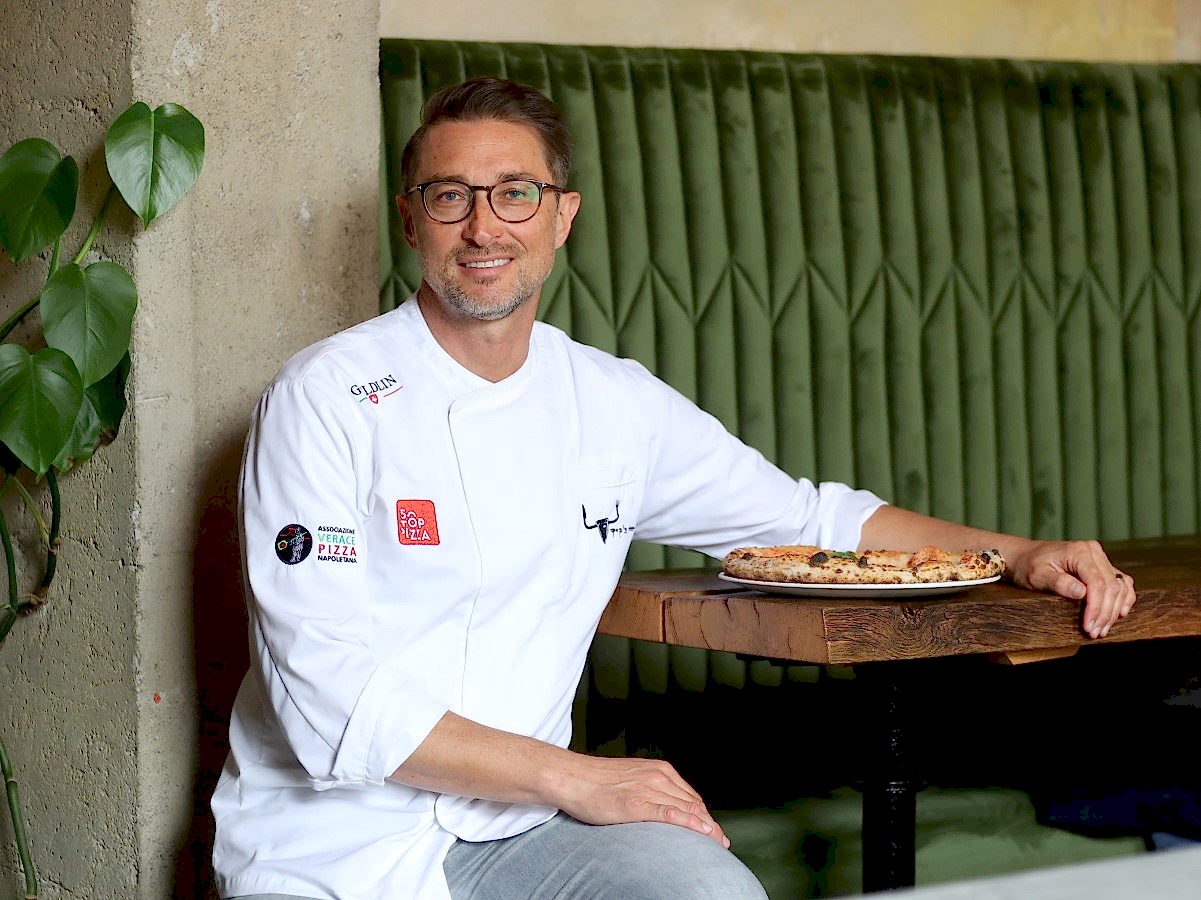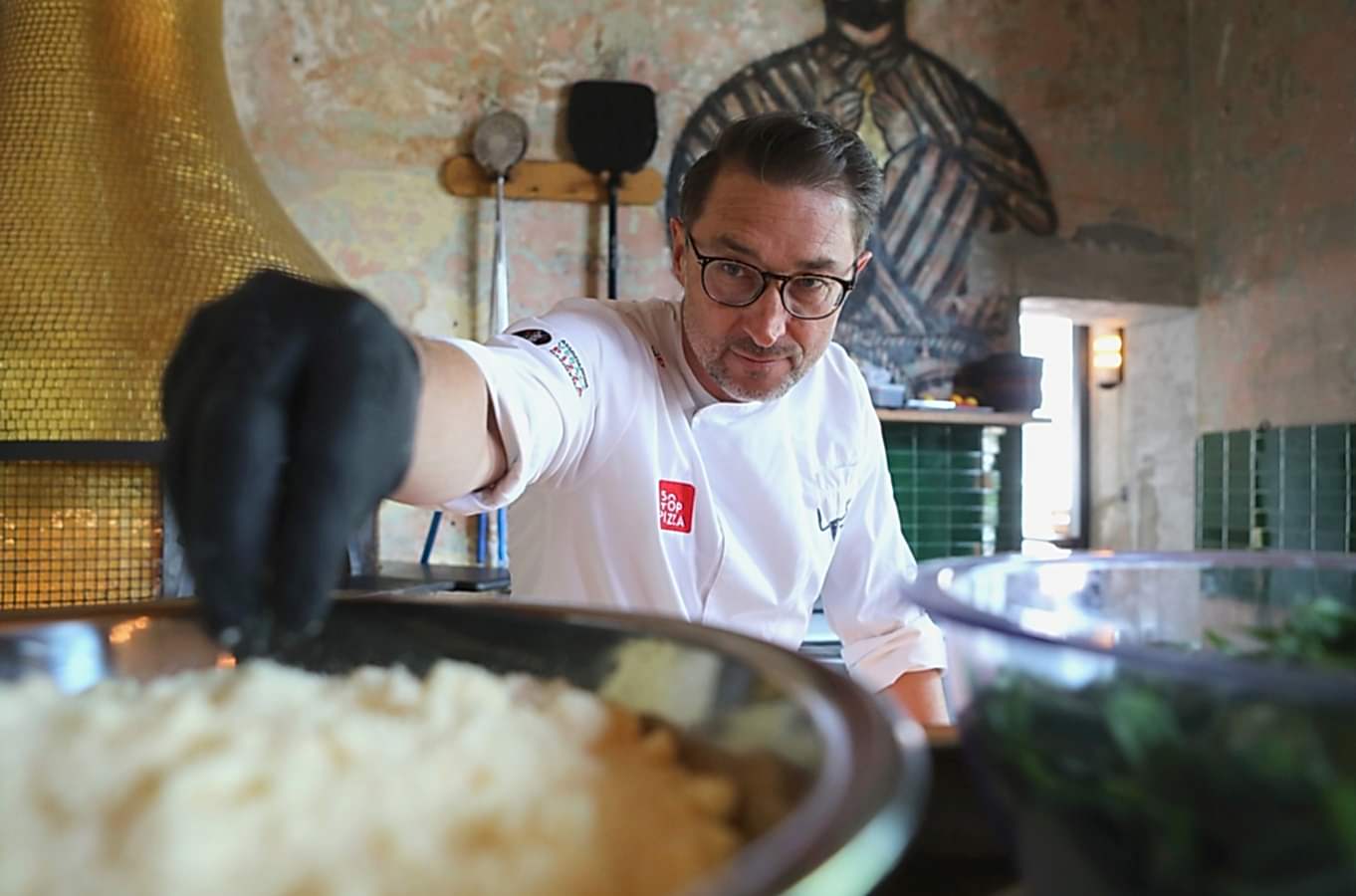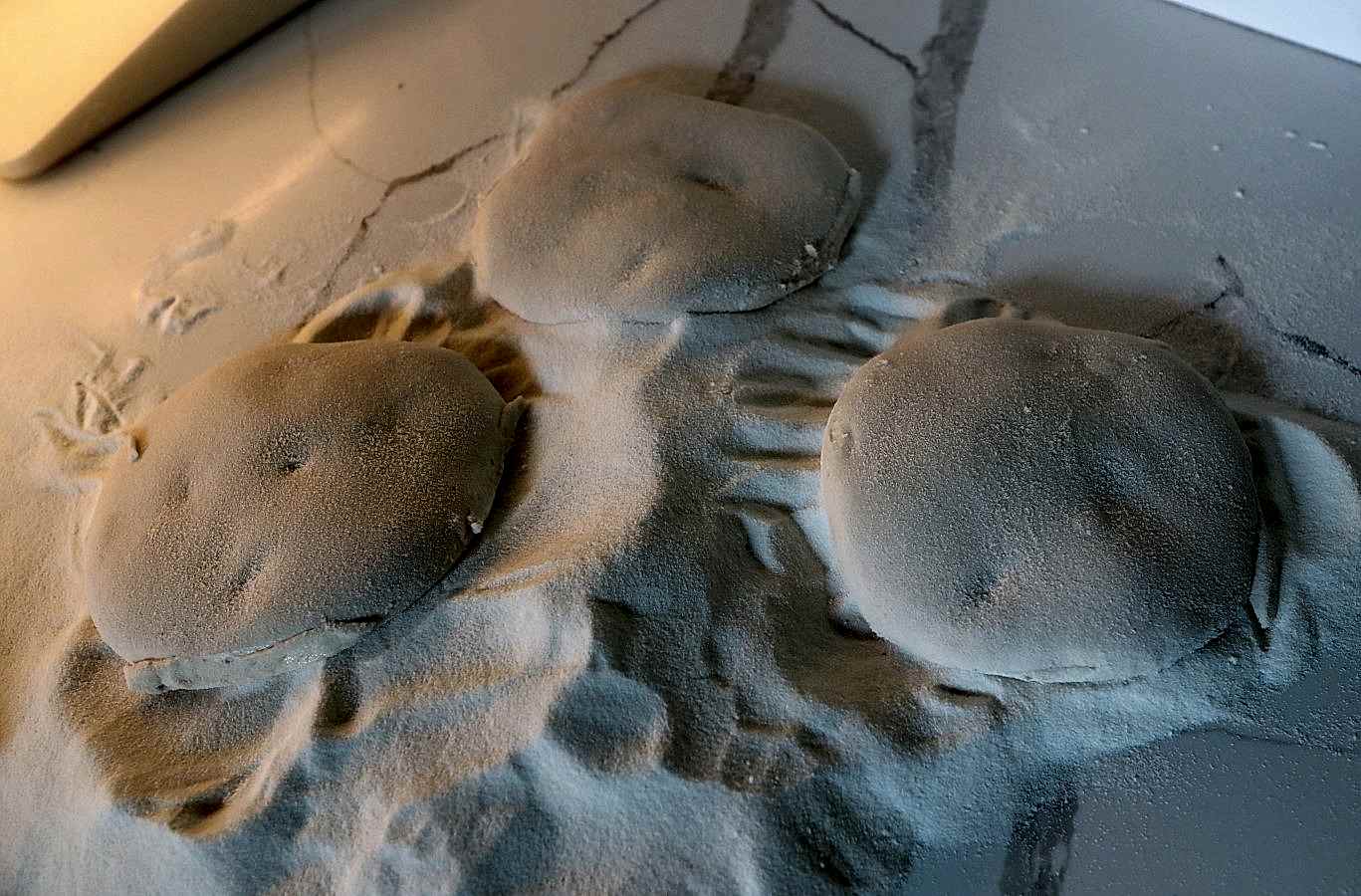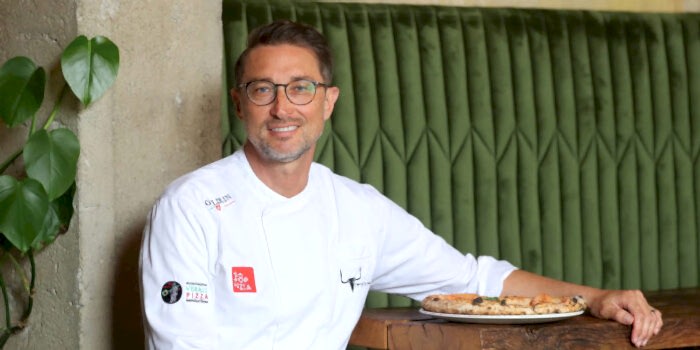On the European list of ‘50 top pizzas‘, the Ljubljana pizzeria Pop’s Pizza is in 40th place; Greg Yurkovich, who kneads the dough here every time, dictated the recipe for us to use at home.
Recently, the 50 top pizza association in Barcelona announced where the top pizzas are baked: in Italy, it is at Francesco Martucci’s pizzeria I Masanieli, and in the rest of Europe, the best are prepared at the Barcelona pizzeria Sartoria Panatieri. There is one from Slovenia on the list of the best 50 in Europe: the Ljubljana pizzeria Pop’s Pizza, run by Greg Yurkovich. Last year they were in 43rd place among Europeans, this year they moved up three places. That’s why we invited ourselves for pizza by the Ljubljanica and returned to the editorial office with a wonderful recipe for dough that works perfectly in a classic oven. In addition, we bring a few tips on how to cover the pizza.

We should prepare the dough at home the day before.
“When we prepare pizza, we follow the philosophy of Naples,” begins Greg Yurkovich, who learned the art of preparing this cult dish in this very city. First, in close association with the legendary Svetozar Raspopović and his son Sebastijan, he set up Pop’s Place Burger, and then the team delved into pizzas. Pop’s Pizza was opened on the other side of Ljubljanica four years ago. In both bars, the design of the dishes was left to Yurkovich, who is still the only one responsible for preparing the pizza dough.
As Yurkovich explains, in Naples in the past, when there were no refrigerators, the dough was prepared by kneading it in the evening and then leaving it at room temperature until the next day. The dough got the right structure after slow fermentation – slow rising is still taken into account today when we start baking pizzas at home. This is the opinion of our interlocutor, who grew up in America as a child of Slovenian parents, and then returned to his homeland twelve years ago.
What about tomatoes?
“We use high-quality, for example Italian San Marzano. If we don’t have it, classic pickled pelatas, which are poured from the can into a larger bowl, will also be suitable. Then we mash them with our hands. We add 6 to 8 grams of salt per kilogram of pickled pelatas and mix,” adds another useful tip from Yurkovich, who emphasizes that neither garlic nor oregano or anything else should be added to the sauce, as this obscures the taste of the tomatoes.

And the cheese?
We should use high-quality ingredients, but let’s take this advice into account: “It is best to choose dry mozzarella, that is, one that is not packed in liquid. Never grate it, always slice it. Some swear by a centimeter-sized cube, while others swear by cutting the mozzarella into pieces about a centimeter thick and four centimeters long.’
Above all, as the manager of the 40th best pizzeria in Europe repeatedly emphasizes during the conversation: “All the ingredients from which we make the pizza should be of high quality.”

Pizza dough
1 kg of flour (TYPE 500)
600 ml of cold water (it should be about 3 degrees Celsius)
2 g fresh yeast (about the size of a large raisin) or a pinch of dry yeast
30 g of salt
a little oil (use it to grease the rising bowl and lightly oil the loaves)
a little wheat semolina or semolina (when making pizzas)
Preparation
1. We start the day before, in the morning: put the flour in a large bowl, crumble and mix the yeast in cold water and slowly mix it into the flour. Knead the dough, still in the bowl, for 5 minutes.
2. After this time, add sea salt and knead a little more.
3. Place the dough on the work surface: roll it out, tear it, fold it and knead it well, which takes 10 or 15 minutes. Shape it into a loaf, place it in a lightly oiled container, cover it and leave it at room temperature (or rather in the cellar, as the recommended temperature for the first rise is 18 and 20 degrees Celsius) for 40 minutes.
4. Divide the dough into approximately 280-gram loaves, place them on a larger tray covered with baking paper. Keep them spaced apart. Lightly oil the loaves and cover with transparent foil. Let them rise at room temperature for 6 or 8 hours.
5. Place the tray with the loaves in the refrigerator. They should wait there for about 20 hours.
6. Two hours before we start baking the pizzas, move the tray from the refrigerator to the counter. When the dough has warmed to room temperature, shape it into pizzas on a counter that has been sprinkled with wheat semolina (or semolina).
7. Cover with one spoonful of tomato puree, spread evenly over the pizza (except for the edges). Bake for three minutes in an oven heated to the highest temperature with ventilation.
8. Then take the pizza out of the oven and cover it to the end: add a little tomato puree, cheese and other ingredients. Continue baking at the highest temperature. We bake the pizzas until they are nicely browned.
Photos: Dejan Javornik
Source: Delo, https://odprtakuhinja.delo.si/
Translation: Google Translate


